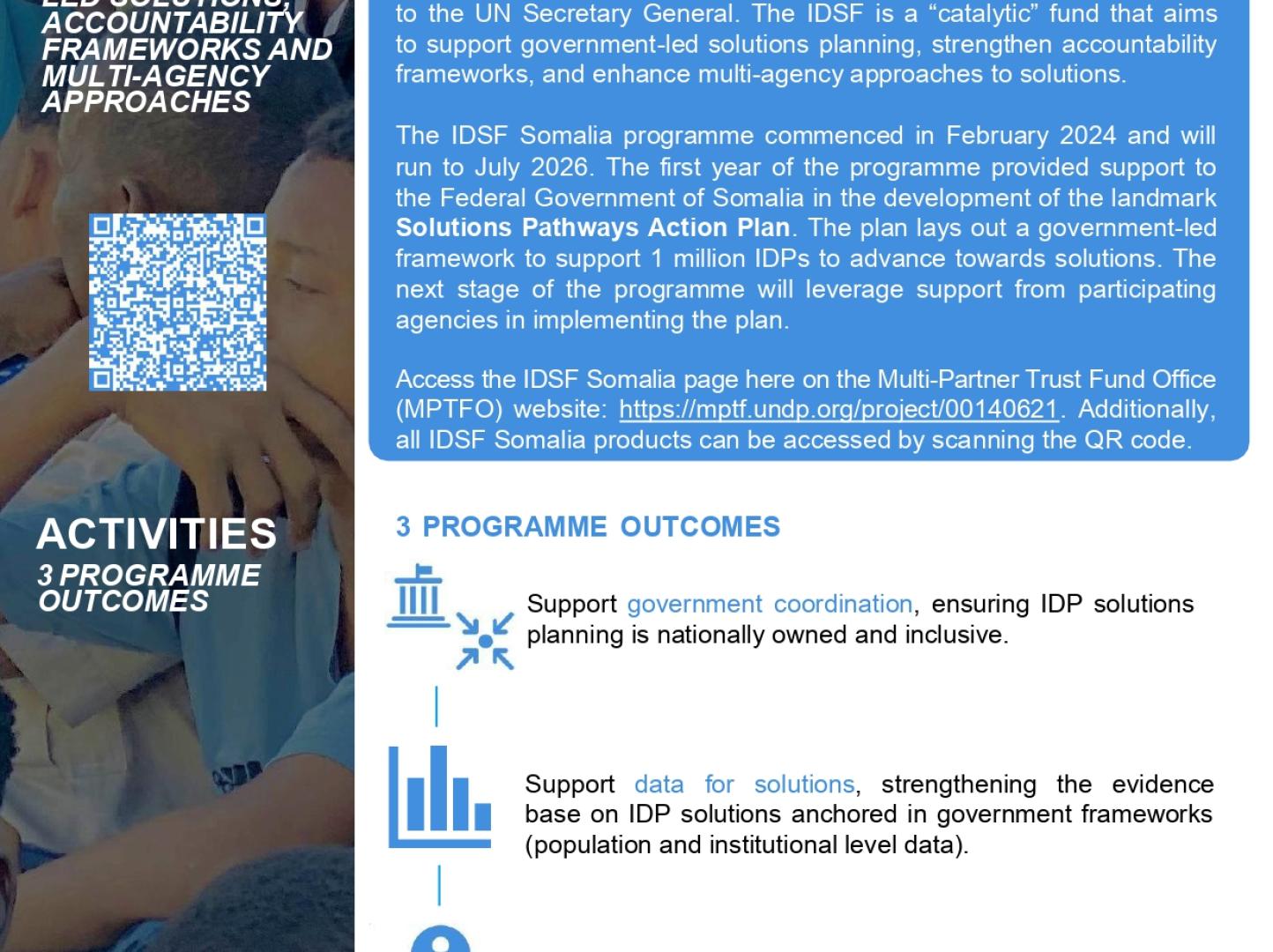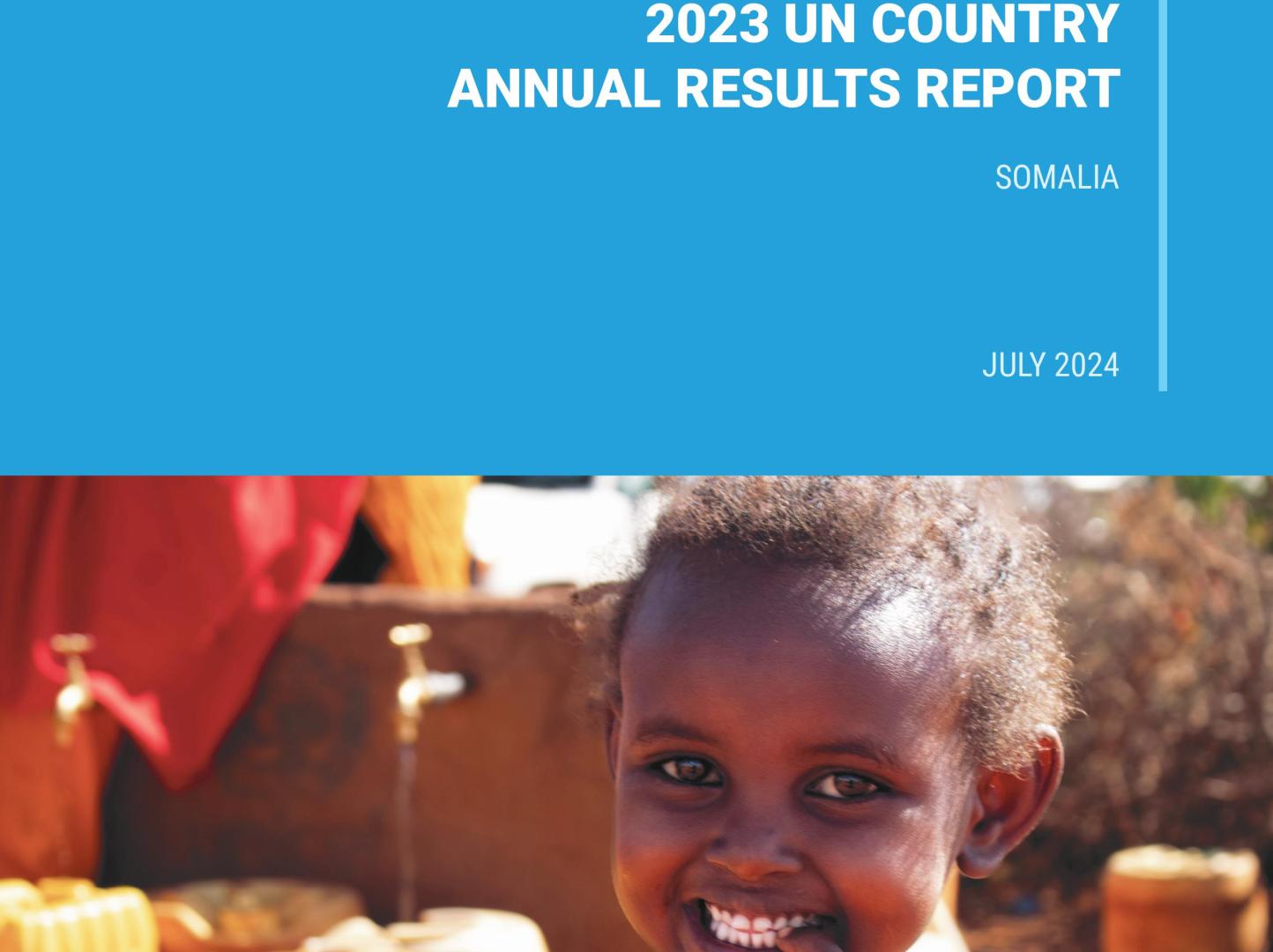Somalia Humanitarian Response Plan 2019

Although we are looking back on our successful fight against the looming famine during the 2016-2017 season, the evolution of the humanitarian situation in the last six months demonstrates the continued unpredictable and volatile context in Somalia. While the unexpectedly plentiful Gu rainy season (April-June) led to an overall improvement in the food security outlook country-wide, it also brought severe flooding across vast areas of southern and central Somalia. In May, cyclone Sagar devastated parts of Somaliland and Puntland, compounding humanitarian needs generated by the dispute in Sool and Sanaag. Moreover, contrary to initially positive projections, the Deyr rainy season (October-December 2018) did not perform as expected, especially in Puntland and Somaliland. New and protracted armed conflicts, insecurity and erratic weather have continued to push Somali civilians away from their homes and into already overfull towns and cities. Consequently, the number of internally displaced persons (IDPs) has reached a record 2.6 million, one of the largest IDP populations in the world.
Notwithstanding these challenges, it is important to also acknowledge the achievements of the humanitarian community in 2018. With timely and generous support from donors, it has been possible to effectively deliver humanitarian aid, currently reaching almost 3 million of the most vulnerable people, with interventions totalling $840.3 million against the 2018 Humanitarian Response Plan (HRP). Due to sustained humanitarian assistance and favourable rains in the first half of 2018, the number of severely food-insecure people decreased by 54 per cent between 2017 and 2018, from 3.3 to 1.5 million.
The Humanitarian Country Team’s Centrality of Protection (CoP) Strategy has increasingly refined our operations in Somalia to reach the furthest behind and most deprived. For 2019, we have further operationalised the CoP Strategy and all projects in the HRP are specifically designed to protect marginalized groups from the dire consequences of discrimination and abuse. To ensure the credibility of our response plan and to reduce funding gaps, we refined humanitarian needs and related targets for the 2019 Humanitarian Programme Cycle by including around 60 per cent of the caseload in stress situations (IPC 2) under the Humanitarian Needs Overview and Response Plan. This will facilitate the gradual handover of food insecure people at stress level to resilience and recovery actors. Consequently, the number of people considered to be in need of humanitarian assistance in 2019 reduced by 32 per cent (from 6.2 to 4.2 million people) and the number of people targeted by 37 percent (from 5.4 to 3.4 million people). The financial requirement for the 2019 HRP stands at $1.08 billion, a reduction of $465 million compared to last year. While this year’s HRP remains focused on the immediate needs of the most vulnerable people (e.g. IDPs, host communities, returnees and refugees from neighbouring countries), the new approach enhances opportunities for development actors to strengthen the resilience of Somalis by implementing programmes that offer long-lasting, durable solutions. This approach has been warmly welcomed by the Government and is fully consistent with the Resilience and Recovery Framework as well as the National Development Plan.
With the reduction in the number of people targeted and overall budget, the complementarity between humanitarian and development assistance becomes more important than ever. Development actors must prioritise programmes to tackle structural and chronic development challenges in Somalia. Once again, the principles underlying the Centrality of Protection Strategy to target the most left behind will guide us here. The Government-led Recovery and Resilience Framework creates the synergies needed to reduce needs and attain the Collective Outcomes.
With the support of the Government of Somalia, the international community and the tireless work of the humanitarian and development communities in Somalia we can move forward confidently on an integrated approach, that results in addressing underlying causes to long standing humanitarian issues. At the same time, we are hereby presenting a Humanitarian Response Plan that reflects this two-track approach and does justice to the still significant humanitarian live-saving needs in Somalia. I sincerely thank our partners for all the good work done so far: donors for their continued support, and humanitarian actors for their determined effort to always improve their effectiveness. We must continue working to alleviate the suffering of the most vulnerable communities in Somalia, while laying the foundation for a more peaceful and sustainable country.











